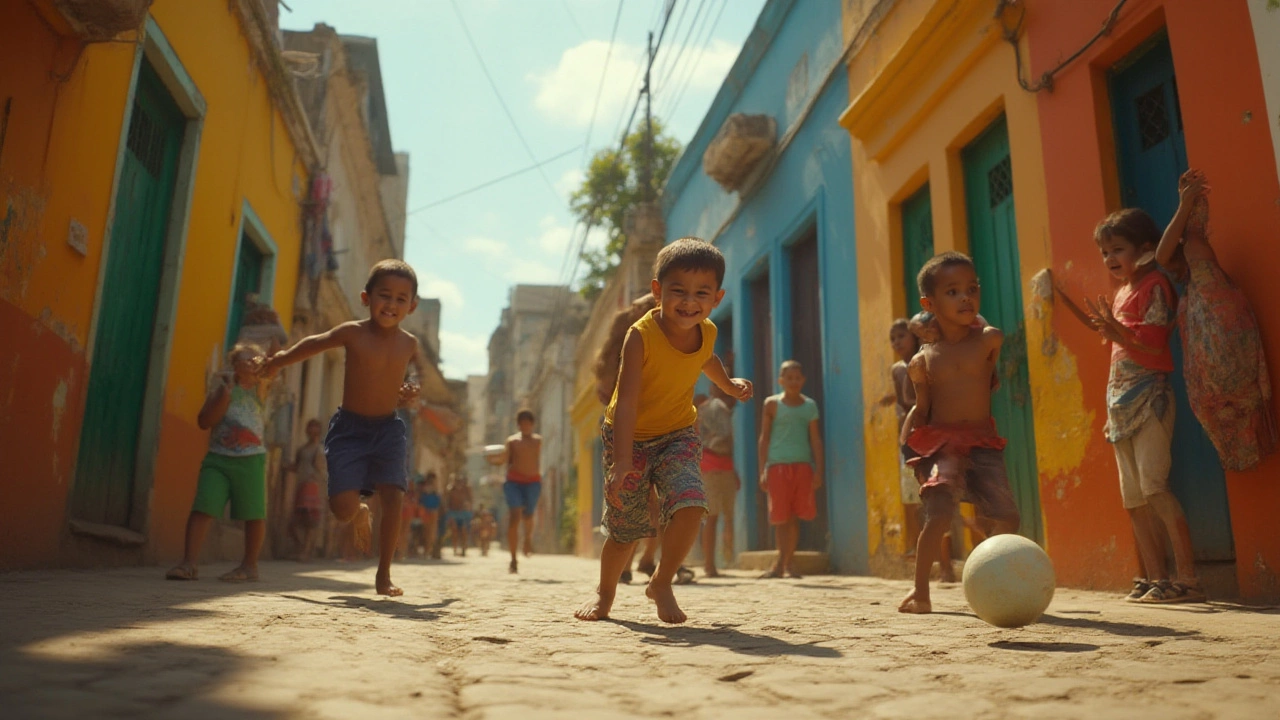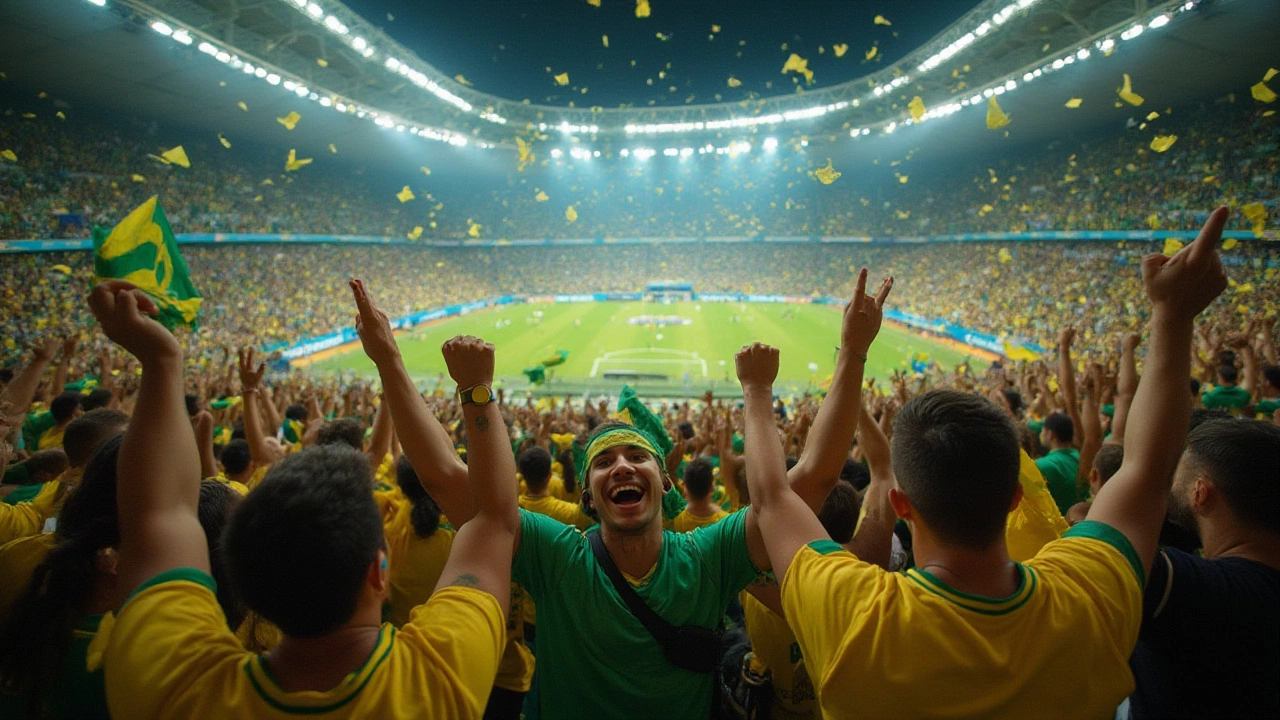Why Football Reigns Supreme in Brazil: Brazil’s Beloved National Sport

Think of Brazil and you probably picture beaches, Carnival, maybe samba—but above all, you think of football. Seriously, football is woven into the fabric of Brazilian life in a way that’s hard to match anywhere else. From Rio’s glimmering Maracanã stadium to the tiniest dusty pitch in the Amazon, football isn’t just a sport here. It’s energy, it’s hope, it’s shared joy. It might sound wild to folks from countries where sports are just weekend fun, but in Brazil, being a football fanatic comes as naturally as breathing.
How Football Came to Brazil (And Never Left)
Football didn’t start in Brazil. In fact, it was a Scottish man, Thomas Donohoe, and a British-Brazilian, Charles Miller, who kicked things off (literally) in the late 1800s. According to Brazilian lore, Miller showed up in São Paulo in 1894 with two footballs and a rulebook under his arm. That’s how the first proper matches were organized, and his influence grew fast throughout cities and schools. By 1901, there were full-on club leagues forming, and by the 20th century, football was everyone’s favorite game. Funny enough, early on, football was seen as a rich man’s game. Only private clubs or upper-class folks played. But as courts and clubs opened up, neighborhoods across Brazil made their own street teams, and suddenly, everyone—every class, every color—could join in. Football in Brazil transformed from exclusive to explosively popular.
This popularity isn’t just because of skill. It’s about practicality. Football doesn’t need lots of equipment. All you need is a ball (or something you can kick around), some friends, and a bit of space. So whether you were growing up in Rio’s favelas or the rural north, you could find a game. Before you knew it, football was more than pastime—it was common ground, a way to break through divisions, and a go-to source of excitement.
The Football Fever: Why Brazil Fell So Hard for the Game
Sure, loads of countries love football. But Brazil’s obsession goes beyond match day. The sport seeps into music, dance, fashion, and politics. Skip work? Sure—if the Seleção is playing. Even presidential speeches get rescheduled. Brazil has more professional football clubs than any nation in the world, with over 700 across various leagues. During the yearly championships—Campeonato Brasileiro Série A—the whole country’s pulse changes.
Let’s talk achievements: Brazil is the only country to win the FIFA World Cup five times (1958, 1962, 1970, 1994, and 2002). Talk about setting expectations high! Legends like Pelé, Ronaldo, Zico, Marta, and Ronaldinho aren’t just Brazilian icons—they’re global. According to the Brazilian Football Confederation (CBF), around 30 million Brazilians play football regularly. That’s almost the whole population of Canada! What makes this craziness unique is that it's not just the stadiums bursting with passion; it’s backyards, street corners, beaches—anywhere you can kick a ball. Famously, Pelé started with a sock stuffed with newspaper, not even a real football.

The Cultural Power of Football in Everyday Brazilian Life
Football has its own way of reflecting Brazil’s mix of resilience and artistry. Kids play barefoot, learning to dribble along uneven cobblestones and sandy beaches long before they hit any formal training. The best players, like Neymar and Romário, almost always start out in cramped urban neighborhoods—where the first lesson is how to outsmart bigger opponents in close quarters. This naturally shaped the flashy style called 'jogo bonito' (the beautiful game). It’s fast, creative, and sometimes looks more like dancing than sport. Brazil’s version of football is all about flair and improvisation, as much as winning. Passes are [slick], moves are unpredictable, and finishing with a little style is always encouraged.
This energy spills into everything: you’ll see people watching matches on tiny TVs in cafes, painting streets with team colors during big tournaments, or holding spontaneous parades. Even street slang borrows heaps of football lingo. Want an example? If someone’s getting lucky, you might hear, “Ele está com a bola cheia,” which literally means “His ball is full”—a nod to being on a hot streak, both on and off the pitch. And yes, many workplaces or schools just give up pretending to function during World Cup games. That’s priority.
| Brazil's World Cup Wins | Years |
|---|---|
| Number of Titles | 5 (1958, 1962, 1970, 1994, 2002) |
| Other Top Finishes | 2nd place (1950, 1998) |
| Hosting Years | 1950, 2014 |
Tips for Experiencing Brazilian Football Like a Local
Want to really get football in Brazil? Don’t just watch a match—live it. Head to a city stadium like Maracanã in Rio de Janeiro if you ever get the chance. The roar when Flamengo scores a goal feels like an earthquake. Prefer something less grand? Even pickup games on Ipanema Beach have a vibe; sand-stained and sweaty, but always full of fireworks. You’ll see creative footwork and fierce competition, no matter who’s playing. Want to join in, but feeling shy? Most casual games welcome anyone who’s up for playing or even just cheering. Just remember, Brazilians are obsessed with skill—don’t be surprised if you get some friendly ribbing for clumsy moves. It’s all part of the fun.
- Always root for a team. Even tourists pick sides: Flamengo or Fluminense in Rio, Corinthians or Palmeiras in São Paulo, and dozens more across other cities.
- Learn some classic chants. “Eu sou brasileiro, com muito orgulho, com muito amor!” means “I am Brazilian, with lots of pride, with lots of love!” and it’s impossible not to sing along when you’re in the crowd.
- If you’re around during the World Cup, soak up the festival. Bars fill with fans hours before kickoff, streets get decked out in banners, and you might even get dragged into a conga line after a goal.
There are entire museums dedicated to football history, like the Museu do Futebol in São Paulo. It’s a must-see for anyone who wants to see why this sport means so much. You’ll catch everything from vintage jerseys to the iconic trophy replicas and rare footage of Brazil’s legendary matches. If you want bragging rights, play a little footvolley (a mix of football and volleyball) on the beach—locals take this seriously, but they love a good laugh when newcomers trip up.

Football’s Future and Lasting Legacy in Brazil
Brazilians aren’t just nostalgic about the past—they’re always on the lookout for the next star. The country still exports more footballers than any other on earth, with hundreds playing in Europe and beyond. There are youth academies all over, training kids from a young age to chase that Pelé-sized dream. And street football, or “pelada,” is still as popular as ever—a classic way for kids to play, laugh, and build friendships. Even megastars come back for local pickup games when they’re visiting home. Brazil’s women’s teams keep breaking ground, too. The iconic Marta Vieira da Silva stands as one of the most decorated female players of all time, holding six FIFA World Player of the Year awards, and inspiring a new generation of girls to lace up their cleats.
Of course, football has its headaches—scandals, fierce rivalries, and the heartbreak of losing that 7-1 match to Germany in 2014. But it’s always a comeback story here. After every loss, Brazilian fans paint the streets brighter, sing louder, and look ahead to the next chance at glory. Money flows through the sport, too. Clubs are big businesses, youth leagues offer rare opportunities, and football-linked products from jerseys to branded snacks make up a big chunk of daily commerce. Just consider the numbers: according to Forbes in May 2024, Brazilian football's total economic impact topped $11 billion in 2023, supporting over 150,000 jobs across different sectors.
Football stands taller than ever in Brazil. It connects generations, sparks giant street parties, and turns every patch of grass into hallowed ground. You don’t need to know the rules or speak the language fluently to feel at home here—all you need is a ball and a bit of heart. That’s the secret to why football is undisputedly Brazil’s number one sport, and why that’s unlikely to change anytime soon.
